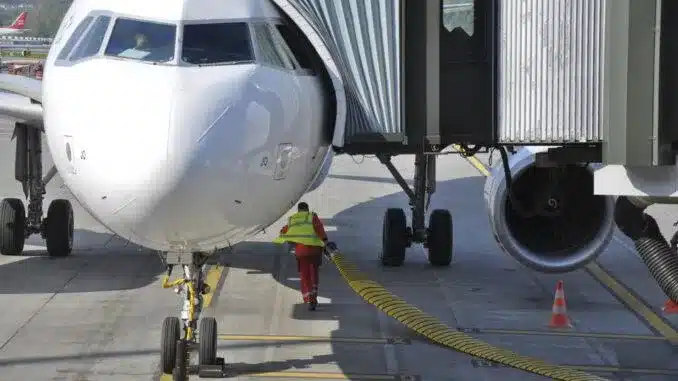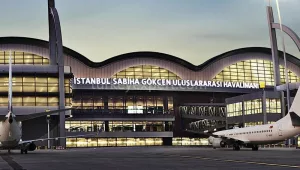Recent research found that severe clear-air turbulence in the North Atlantic has increased by 55 percent since 1979. Though they seldom cause casualty on commercial flights, industry experts suggest keeping seatbelts on throughout the flight can reduce injury risks when encountering violent currents.
CLEAR-AIR TURBULENCE ON RISE
Substantial evidence now shows that turbulence has been increasing because of climate change.
“Our latest future projections indicate a doubling or trebling of severe turbulence in the jet streams in the coming decades if the climate continues to change as we expect,” Paul Williams, a professor of atmospheric science in the Department of Meteorology at the University of Reading, United Kingdom, told Xinhua in an interview on Tuesday.
“I think it’s probably going to be a fairly global phenomenon, this bumpier sky that we’re going to see,” Williams said.
Turbulence researcher Mark Prosser emphasized that the first thing to remember was that turbulence has always been a flying feature. “It’s a natural feature of the atmosphere, and in particular, clear-air turbulence, which we’ve looked at in our research paper,” he said.
“When we analyzed the last 40 years of data across the world, we found that there had been a marked increase. So between 1982 and 2020, particularly in the middle latitudes of the Northern Hemisphere, and within that over the United States and over the North Atlantic in particular, there has been a big increase. The biggest increase was 55 percent over the North Atlantic,” Prosser added.
Research shows turbulence costs the aviation industry hundreds of millions of U.S. dollars every year, including around 500 million dollars in the United States alone, Prosser said.
TURBULENCE FATALITIES VERY RARE
Severe turbulence on the Singapore Airlines flight SQ321 from London to Singapore has left one passenger dead and 30 others injured, forcing an emergency landing at Suvarnabhumi Airport in Thailand’s capital Bangkok on Tuesday.
“Turbulence fatalities on commercial flights are fortunately very rare but have sadly increased by one today,” Williams said.
The last clear air turbulence-related death on Cirium, an aviation analytics company’s database, involved a United Airlines Boeing 747 in 1997, when more than 100 passengers were and one was killed.
“As far as I am aware, there has not been a turbulence fatality on a commercial flight since 2009,” said Williams.
“It’s just a risk you take when you fly. Sometimes, you can encounter strong turbulence. The risk of dying is still extremely small, though. That’s worth bearing in mind,” said Prosser.
KEEP SEATBELT FASTENED
Commenting on what passengers can do to minimize the risks, Prosser recommends seatbelts.
“It’s a good idea to keep your seatbelts loosely fastened throughout any journeys you take on planes, not merely when the plane is taking off or landing,” Prosser said.
“Usually you’ll get some turbulence, and the pilot might tell everyone to put their seatbelts on, and then people hopefully follow that advice. And then you might encounter some harder turbulence, and the pilot will try and reduce or increase their altitude to avoid this patch of sky,” he said.
“There is a method to better spot turbulence before it’s encountered. However, I’m not sure whether it’s in widespread use. It involves attaching a device to the front of the plane that emits a laser beam, and this laser beam can give you a few seconds’ notice if the air in front of it is highly turbulent. That’s enough time to enable the pilot to say, everyone get their seatbelts on,” he added.













